Abstract
Rogers, Thomas E. (Louisiana State University, Baton Rouge), Richard J. Hidalgo, and George T. Dimopoullos. Immunology and serology of Anaplasma marginale. I. Fractionation of the complement-fixing antigen. J. Bacteriol. 88:81–86. 1964.—Studies were conducted to fractionate and purify the complement-fixation (CF) antigen of Anaplasma marginale in infected erythrocytes of cattle. Initial attempts were made to resolve the antigen from crude stromatal preparations by various chemical and physical methods. Fractionation procedures involving partial and total lipid extraction suggested that the CF antigen was lipoprotein in nature. Fluorocarbon deproteinization of stromatal antigens was also attempted. A method was developed for the preparation of a desirable Anaplasma CF antigen which involved disintegration of infected erythrocytes by sonic vibration and separation of the antigen by differential centrifugation. Antigens prepared by this method were highly specific, colorless, did not exhibit anticomplementary activity, and possessed higher titers than standard Anaplasma antigens. When density-gradient sedimentation was applied to sonic extracts of infected cells, it was demonstrated that the CF antigen could also be fractionated by this method.
Full text
PDF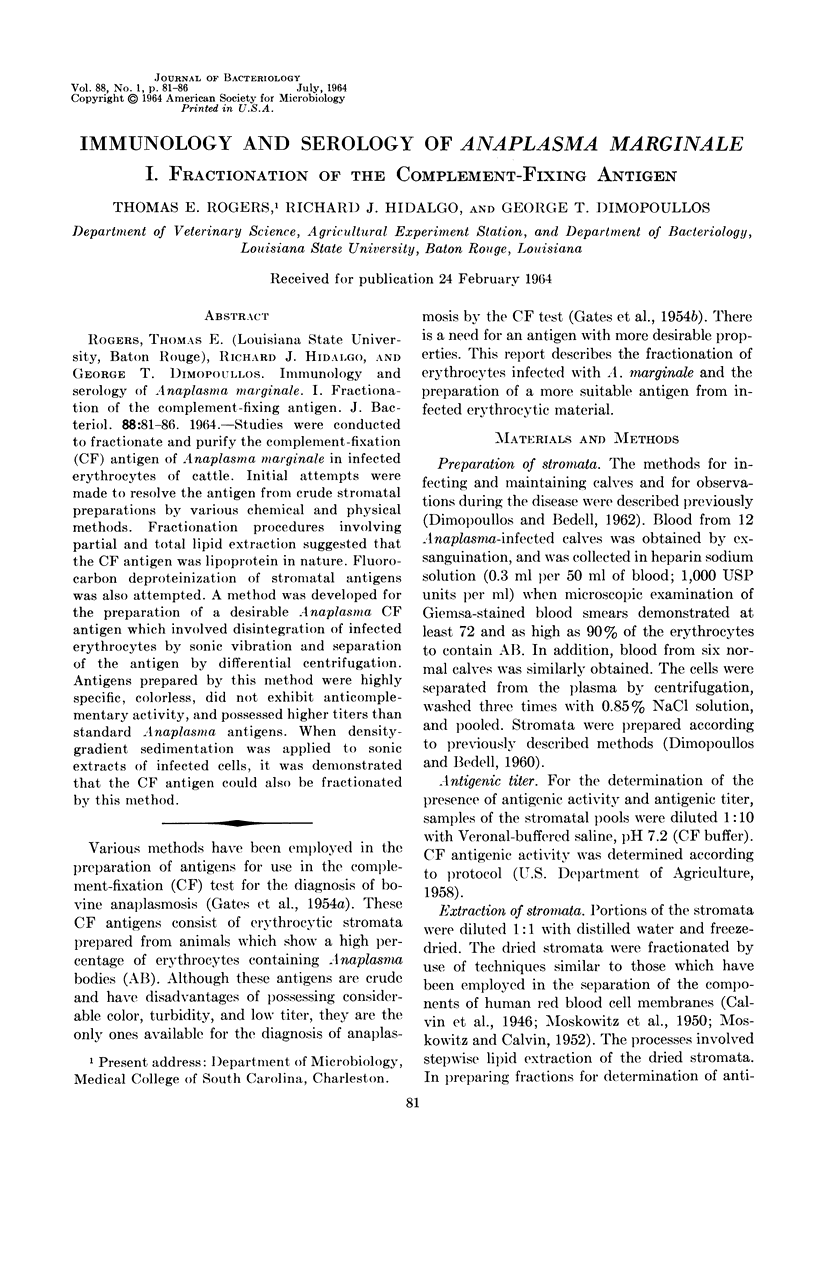
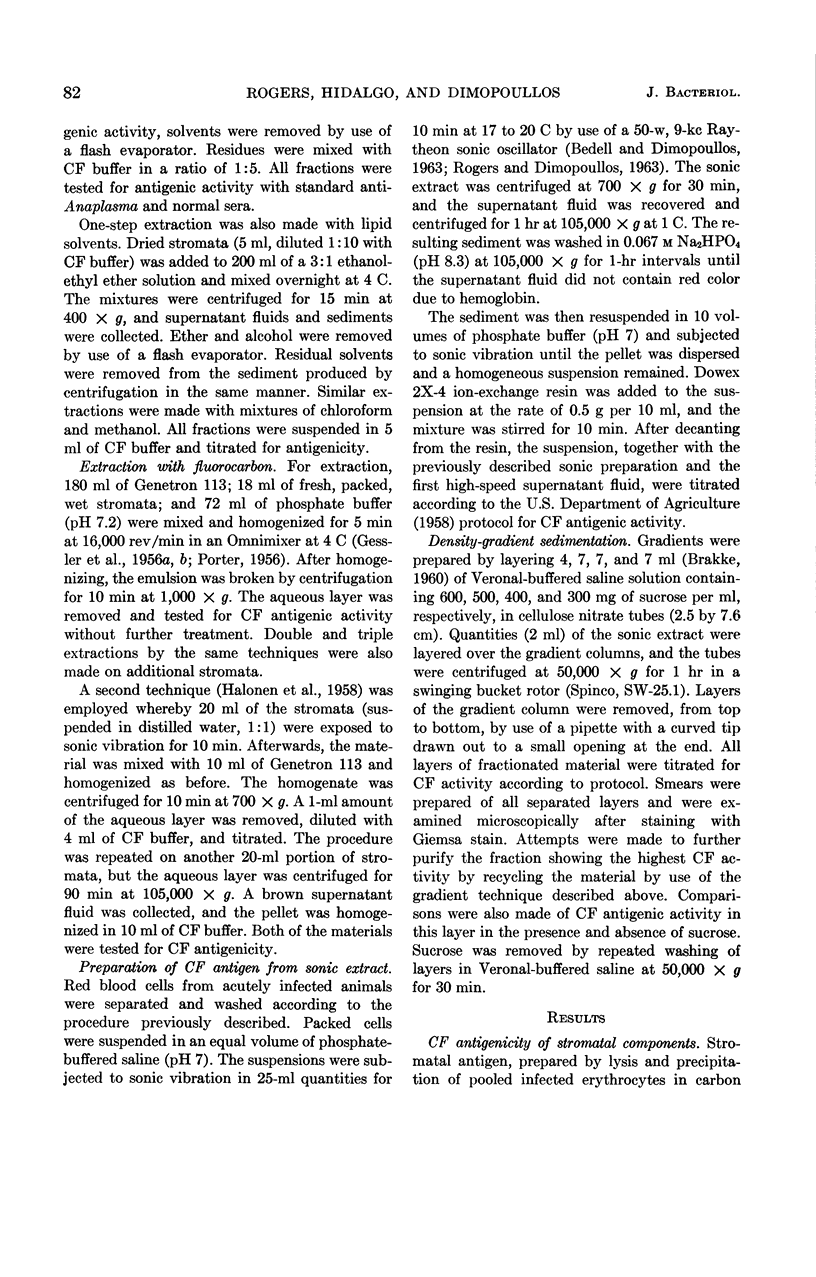
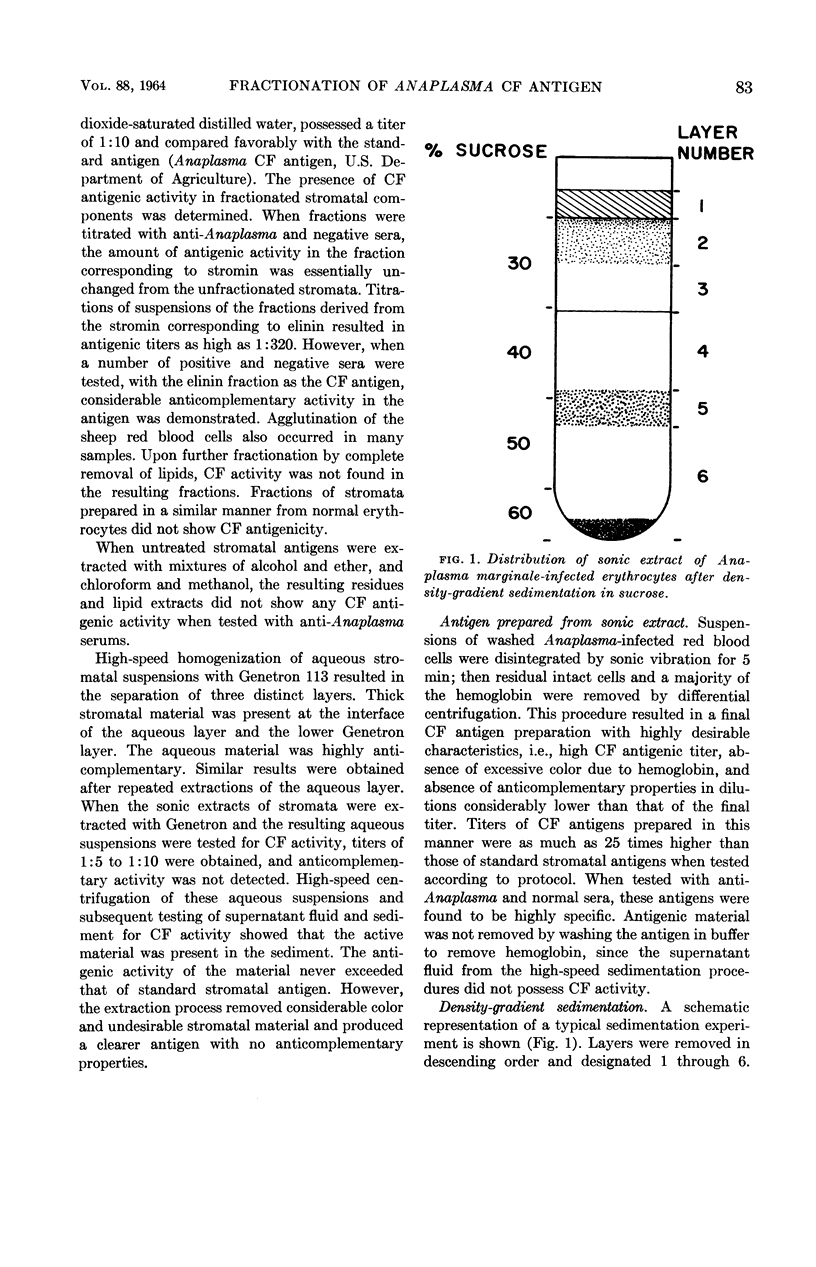
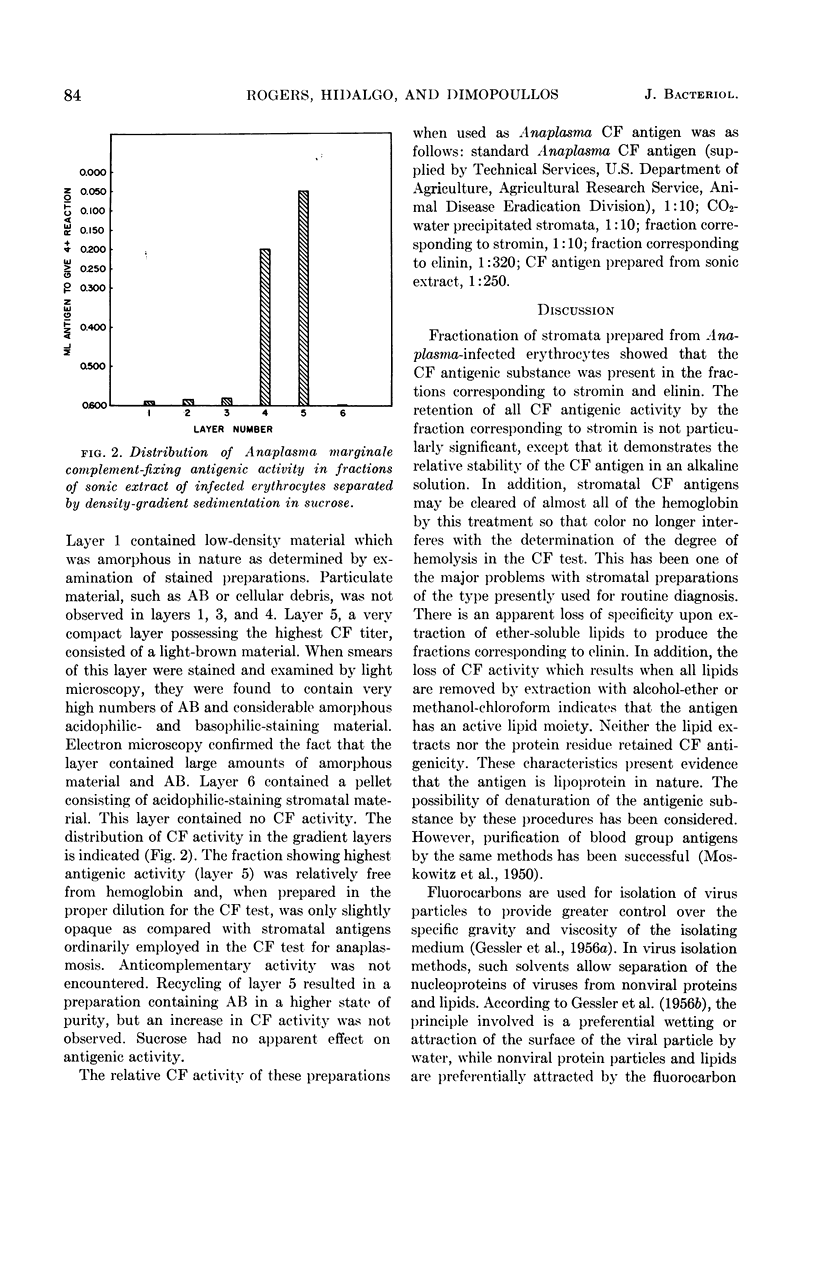
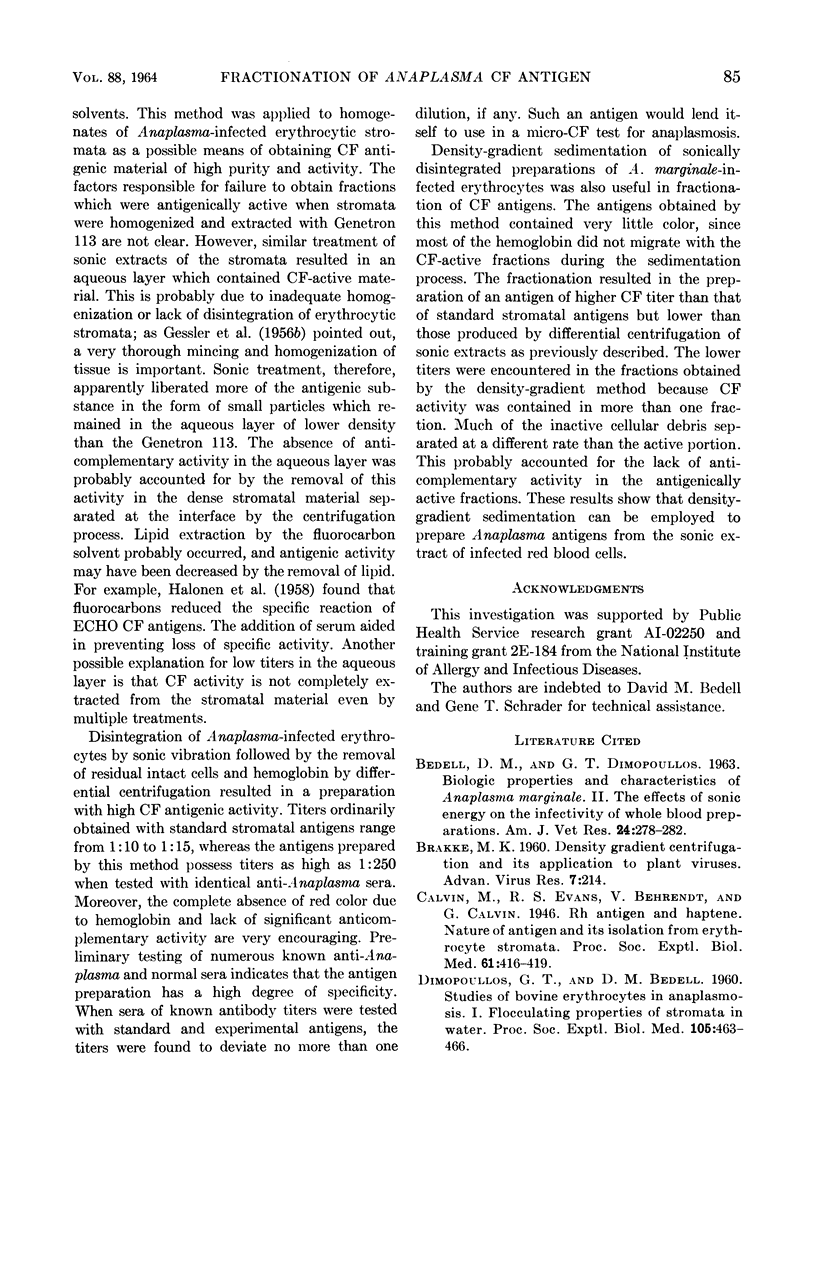
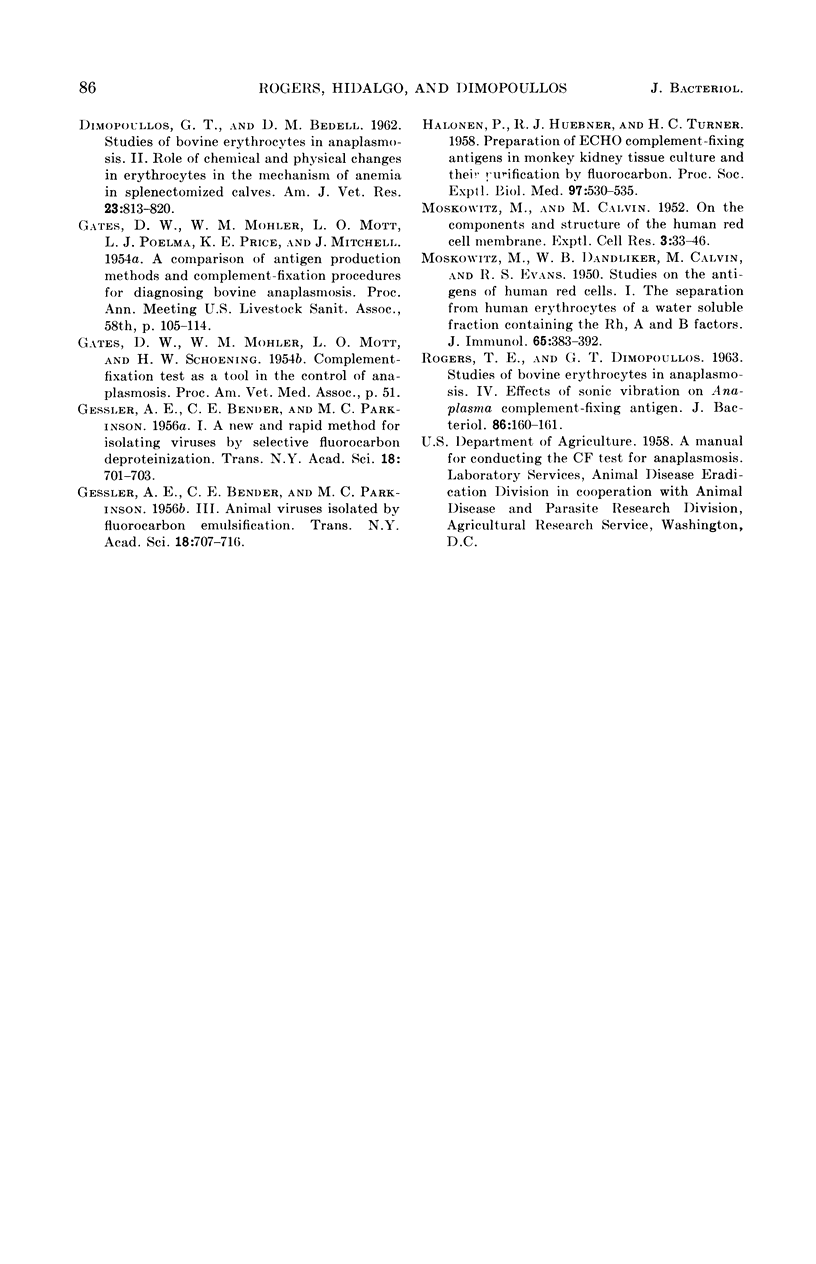
Selected References
These references are in PubMed. This may not be the complete list of references from this article.
- BEDELL D. M., DIMOPOULLOS G. T. Biologic properties and characteristics of Anaplasma marginale. II. The effects of sonic energy on the infectivity of whole blood preparations. Am J Vet Res. 1963 Mar;24:278–282. [PubMed] [Google Scholar]
- DIMOPOULLOS G. T., BEDELL D. M. Studies of bovine erythrocytes in anaplasmosis. I. Flocculating properties of stromata in water. Proc Soc Exp Biol Med. 1960 Dec;105:463–466. doi: 10.3181/00379727-105-26142. [DOI] [PubMed] [Google Scholar]
- DIMOPOULLOS G. T., BEDELL D. M. Studies of bovine erythrocytes in anaplasmosis. II. Role of chemical and physical changes in erythrocytes in the mechanism of anemia in splenectomized calves. Am J Vet Res. 1962 Jul;23:813–820. [PubMed] [Google Scholar]
- HALONEN P., HUEBNER R. J., TURNER H. C. Preparation of ECHO complementfixing antigens in monkey kidney tissue culture and their purification by fluorocarbon. Proc Soc Exp Biol Med. 1958 Mar;97(3):530–535. doi: 10.3181/00379727-97-23796. [DOI] [PubMed] [Google Scholar]
- MOSKOWITZ M., DANDLIKER W. B., CALVIN M., EVANS R. S. Studies on the antigens of human red cells. I. The separation from human erythrocytes of a water soluble fraction containing the Rh, A and B factors. J Immunol. 1950 Oct;65(4):383–392. [PubMed] [Google Scholar]
- ROGERS T. E., DIMOPOULLOS G. T. STUDIES OF BOVINE ERYTHROCYTES IN ANAPLASMOSIS. IV. EFFECTS OF SONIC VIBRATION ON ANAPLASMA COMPLEMENT-FIXING ANTIGEN. J Bacteriol. 1963 Jul;86:160–161. doi: 10.1128/jb.86.1.160-161.1963. [DOI] [PMC free article] [PubMed] [Google Scholar]


